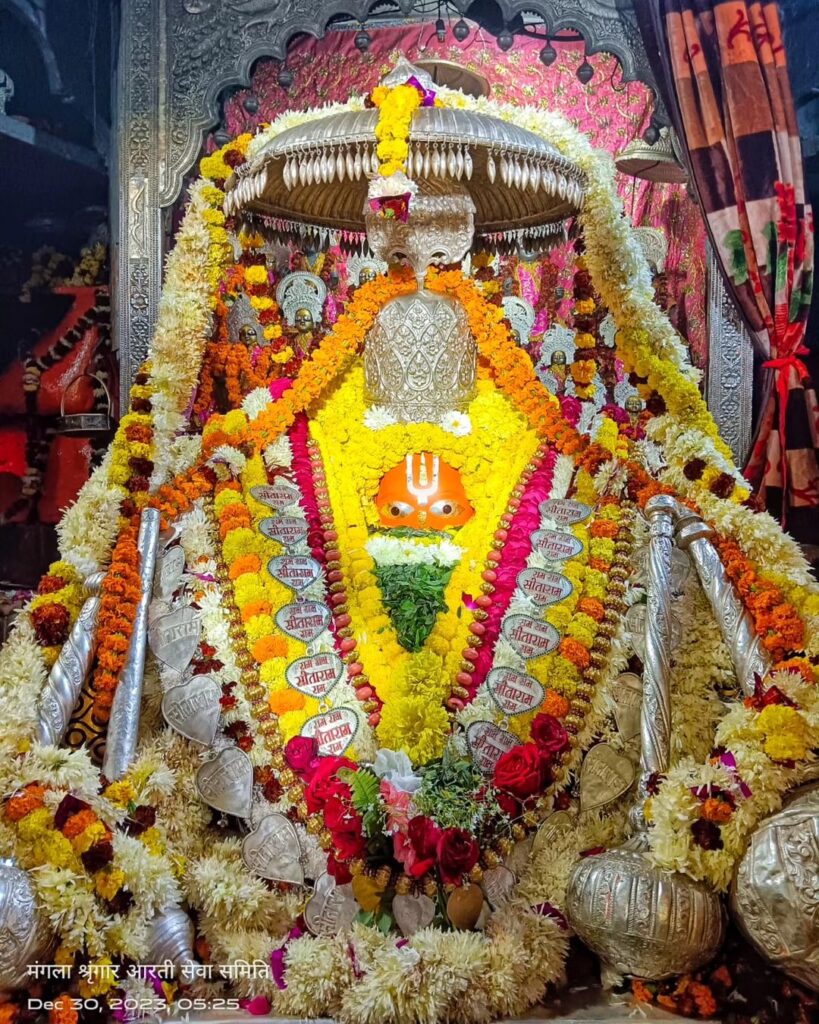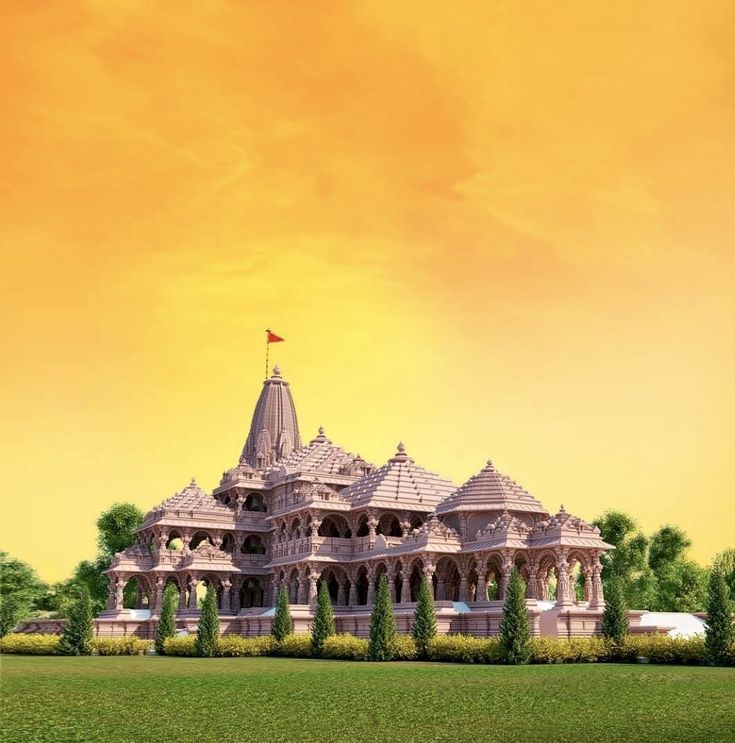Ayodhya (अयोध्या Ayodhyā) is a city situated on the banks of the Sarayu river in the Indian state of Uttar Pradesh. It is one of the major holy cities of Hinduism, the world’s 3rd-largest religion. It has a central role in the ancient Indian epic(Who became the king of Ayodhya after Ram?), the Ramayana, whose protagonist Lord Rama is God incarnated on Earth as the prince of Ayodhya.
How many tourist places are there in Ayodhya?
Explore Ayodhya’s spiritual treasures with visits to Ram Janmabhoomi, the sacred birthplace of Lord Rama, and Hanuman Garhi, offering breathtaking views. Discover history at Kanak Bhavan, once King Dasharatha’s palace turned museum, and find solace at the ancient Nageshwarnath Temple and Sita ki Rasoi. Don’t miss the serene Ram ki Paidi by the Saryu River.
History of Ayodhya
The city holds a deep-rooted historical significance, being mentioned in various ancient texts such as the Ramayana and Mahabharata. Originally known as Saketa, Ayodhya is also noted in early Buddhist and Jain canonical texts, with both Gautama Buddha and Mahavira reported to have visited and lived in the city during ancient times.
In recent times, Ayodhya has gained prominence due to the Ram Janmabhoomi-Babri Masjid dispute. This controversy resulted in the demolition of the mosque by Hindu mobs in 1992, with the aim of constructing a grand temple dedicated to Rama at the disputed site. The legal battle culminated in a landmark ruling by a five-judge full bench of the Supreme Court, which determined, based on tax records, that the land belonged to the government. The court ordered the transfer of the land to a trust for the construction of a Hindu temple and directed the government to allocate an alternative 5 acres of land to the Uttar Pradesh Sunni Central Waqf Board for the construction of a mosque, in compensation for the demolished Babri mosque.

Who became the king of Ayodhya after Ram?
- Instead of directly choosing a successor, Ram divided his kingdom into two parts:
- North Kosala went to his son Lava, with Shravasti as its capital.
- South Kosala went to his other son Kusha, with Kusavati as its capital.
- But lord Ram made the Hanuman ji as a king of Ayodhya.
What are the famous things in Ayodhya?
Here are some of the famous things to see in Ayodhya:
1.Ram Janmabhoomi
A highly revered site for Hindu devotees, believed to be the birthplace of Lord Ram .
2. Hanuman Garhi
A 10th-century temple dedicated to the Hindu God, Hanuman .
3. Kanak Bhawan
A holy site dedicated to the Hindu deity Lord Rama and his wife, Goddess Sita .
4. Nageshwarnath Temple
Established in the name of the local deity, Lord Nageshwarnath, the temple is located adjacent to the Theri Bazaar in Ayodhya.
Are there any tour packages available for Ayodhya?
Absolutely! Various tour packages offer a comprehensive exploration of Ayodhya’s hidden gems and unique experiences. Consider these options:
1. Spiritual Exploration Package:
- Focus: Spiritual sites and ancient temples.
- Highlights: Ram Janmabhoomi, Hanuman Garhi, Kanak Bhavan, Nageshwarnath Temple, Sita ki Rasoi, Ram ki Paidi, Evening Aarti ceremony.
- Duration: 3-4 days.
- Example Providers: Veena World, Yatra.
2. Off-the-Beaten-Path Adventure:
- Focus: Unique experiences and lesser-known sites.
- Highlights: Gulab Bari, Mani Parvat, Guptar Ghat, Tulsi Udyan, Ayodhya Museum, Awadh Shilpgram, Chowk market, Bharat Kund, Rama Katha Park.
- Duration: 4-5 days.
- Example Providers: Holidify, MakeMyTrip.
3. Heritage and Culture Immersion:
- Focus: Historical sites, museums, and local crafts.
- Highlights: Kanak Bhavan, Ayodhya Museum, Awadh Shilpgram, Chowk market, Ram ki Paidi, Sita ki Rasoi, Tulsi Udyan, traditional Awadhi meal experience.
- Duration: 3-4 days.
- Example Providers: Uttar Pradesh Tourism Department, local travel agencies.
4. Customized Private Tour:
- Focus: Tailor-made itinerary based on your interests and preferences.
- Highlights: Flexibility to choose specific sites, activities, and pace.
- Duration: Variable, as per your desired itinerary.
- Example Providers: Local tour guides, travel agents.
Some off beat places to visit Ayodhya
1. Gulab Bari: A Fragrant Rose Haven
Immerse yourself in the enchanting beauty of Gulab Bari, a rose garden boasting over 150 varieties of roses. Experience a riot of colors and intoxicating aromas, especially during the peak bloom season from February to March.
2. Mani Parvat: Hiking Amidst Spiritual Aura
Embark on a journey up Mani Parvat, a hillock believed to be the practice ground for Lord Rama’s archery. Enjoy panoramic views of the Saryu River and surrounding plains, soaking in the spiritual aura of this sacred spot.
3. Sita ki Rasoi: A Glimpse into Ancient Times
Step back in time at Sita ki Rasoi, the legendary kitchen of Queen Sita. This ancient temple complex, adorned with intricate carvings, narrates tales of Ramayana through its architecture.
4. Guptar Ghat: Serenity by the Sacred River
Escape the city hustle at Guptar Ghat, a hidden bathing spot frequented by locals. Immerse yourself in the sacred Saryu River, finding serenity amidst serene ghats and vibrant boat life.
5. Tulsi Udyan: Homage to Tulsidas
Pay homage to the revered Tulsidas at Tulsi Udyan, a picturesque garden dedicated to the poet-saint who penned the Ramacharitmanas. Wander through themed sections, each depicting scenes from the epic poem.
6. Ayodhya Museum: Unveiling City’s Rich History
Delve into Ayodhya’s rich history at the Ayodhya Museum. Housing ancient artifacts, sculptures, and paintings, it narrates the city’s evolution from a prehistoric settlement to a spiritual center.
7. Awadh Shilpgram: Artisan’s Haven
Witness vibrant handicrafts at Awadh Shilpgram, a village showcasing traditional crafts like weaving, pottery, and wood carving. Interact with artisans, learn techniques, and pick up unique souvenirs.
8. Chowk: Authentic Local Experience
Experience bustling local life at Chowk, Ayodhya’s oldest market. Wander through narrow lanes lined with shops selling spices, sweets, and everyday essentials, soaking in the city’s authentic charm.
9. Bharat Kund: Holy Waters of Blessings
Seek blessings at Bharat Kund, a holy pond associated with Lord Rama’s brother, Bharat. Legend has it that Bharat performed rituals here after Rama’s exile. Bathe in sacred waters or soak in peaceful ambiance.
10. Rama Katha Park: Reliving the Epic
Relive the Ramayana at Rama Katha Park, showcasing scenes through life-size sculptures and murals. Explore the park, letting the art narrate the timeless tale of Rama.
Remember, these are just a few glimpses into the hidden treasures of Ayodhya. Lace up your walking shoes, open your mind, and embark on an off-beat adventure to discover the true essence of this holy city!
Dormitory in Ayodhya
Finding the perfect dormitory in Ayodhya depends on your budget, location preferences, and desired amenities. Here are some options to consider:
Budget-Friendly:
- Gita Bhawan, Civil Lines: A dharamshala offering clean and basic dormitories for both men and women, close to the Ayodhya Railway Station. Rates start around ₹150 per night.
- Sita Kitchen Guest House, Chowk: Located in the central market area, this guest house offers affordable dormitory beds with limited facilities. Rates are around ₹200 per night.
- Sri Ram Dham, Naya Ghat: Situated near the Saryu River, this dharamshala provides basic dormitories for pilgrims at nominal rates. Expect shared bathrooms and minimal amenities.
Mid-Range:
- Hanuman Backpackers Hostel, Tulsi Nagar: This modern hostel features mixed and female-only dormitories with comfortable beds, air conditioning, and lockers. They also offer a common area, laundry facilities, and tours. Rates range from ₹300-400 per night.
- Yatri Niwas, Ayodhya Junction: Located near the railway station, this guest house offers spacious dormitories with attached bathrooms and basic amenities. Rates are around ₹400 per night.
- Ayodhya Backpackers, Gulab Bari: Situated near the Rose Garden, this hostel provides mixed and female-only dormitories with air conditioning, comfortable beds, and a rooftop cafe. They also organize sightseeing tours and events. Rates range from ₹400-500 per night.
Luxury:
- Tulsi Udyan Guest House, Nageshwarnath Temple: This guest house offers spacious dormitories with attached bathrooms and modern amenities, located within the scenic Tulsi Udyan park. Rates start around ₹500 per night.
- Kashi Kunj Resort, Faizabad: Situated outside Ayodhya city, this resort features air-conditioned dormitory rooms with attached bathrooms, offering a swimming pool, restaurant, and garden facilities. Rates are around ₹600-700 per night.
Additional Tips:
- Book your dormitory bed in advance, especially during peak seasons like Ram Navami.
- Consider amenities like lockers, laundry facilities, and common areas for socializing.
- Check for curfew timings and visitor restrictions in some dormitories.
- Explore online reviews and ratings before making a decision.
One-day trip to Ayodhya
Here’s a suggested itinerary for a one-day trip to Ayodhya, focusing on spiritual and historical highlights:
Morning:
- 6:00 AM: Begin with a holy dip in the Saryu River at Naya Ghat. Take some time to soak in the spiritual atmosphere and witness the sunrise.
- 7:00 AM: Head to Hanuman Garhi, offering panoramic views of the city. Climb the 700 steps to the temple and seek blessings from Lord Hanuman.
- 8:00 AM: Visit Kanak Bhavan, the opulent palace of King Dasharatha. Appreciate the intricate architecture and imagine the royal life of Rama’s era.
- 9:00 AM: Proceed to Ram Janmabhoomi, the sacred site believed to be Lord Rama’s birthplace. Immerse yourself in the spiritual vibrations and offer prayers.
Afternoon:
- Noon: Enjoy a traditional Awadhi lunch at a local restaurant—Savour delicacies like Kaju Makhana, Malai Makhan, and Awadhi Biryani.
- 1:00 PM: Take a leisurely boat ride on the Saryu River, enjoying the scenic beauty and vibrant boat life.
- 2:00 PM: Explore Tulsi Manas Museum, dedicated to the poet-saint Tulsidas and his epic Ramayana. Learn about the cultural significance of the poem.
- 3:00 PM: Visit Nageshwarnath Temple, an ancient temple dedicated to Lord Shiva. Admire the architectural wonder and experience the serene atmosphere.
Evening:
- 4:00 PM: Witness the enchanting evening aarti ceremony at Ram Janmabhoomi. Observe the rituals and let the devotional chantings mesmerize you.
- 5:00 PM: Relax and enjoy local sweets or chai at a nearby cafe. Reflect on your journey through Ayodhya’s holy and historical sites.
- 6:00 PM: Take a taxi or bus back to your starting point.
Additional Tips:
- Dress modestly, preferably in cotton clothes, while visiting temples.
- Carry a bottle of water and wear comfortable shoes as you’ll be walking a lot.
- Photography is restricted inside some temples, so be mindful of the rules.
- Hire a local guide for deeper insights into the history and significance of the sites.
- Consider adding a visit to Ram ki Paidi or Sita ki Rasoi if you have extra time.
Remember, this is just a suggestion and you can adjust it based on your interests and preferences. Enjoy your one-day trip to Ayodhya and embrace the city’s spiritual essence and rich history!


